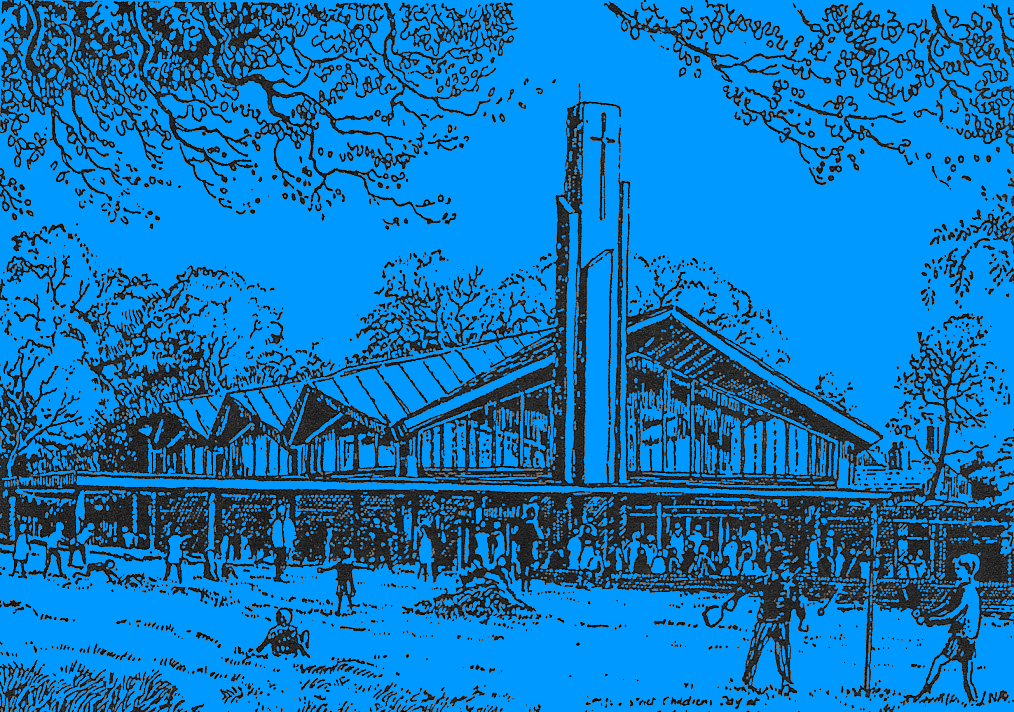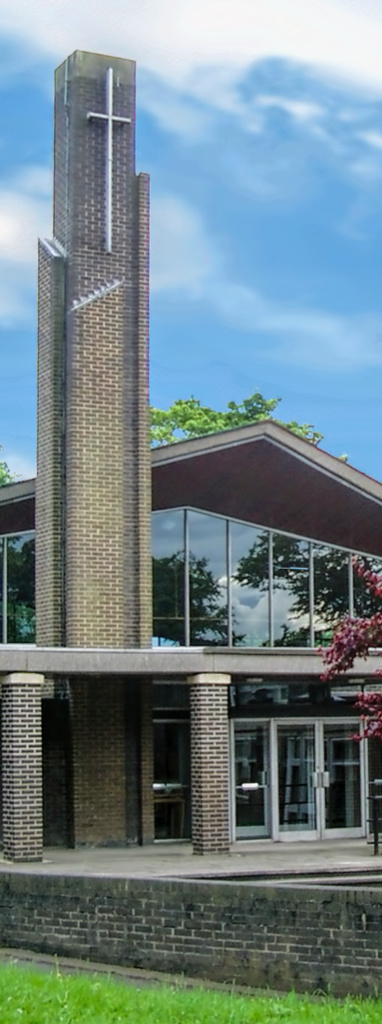Headingley St Columba is a Union Church. The “Headingley”‘ of Headingley St Columba is not the geographical area in which it stands, but commemorates Headingley Hill Congregational Church, whose former buildings still stand half a mile along the road towards the city. The “St Columba” part of our name commemorates the Presbyterian Church in Cavendish Road.
 Headingley Hill Congregational Church was formally constituted in 1866. The building is the only church to have been designed by the architect Cuthbert Brodrick, whose other notable designs include the Leeds Corn Exchange and Leeds Town Hall. There were two Sunday services for adults, at 10.30am and 6.30pm, a Sunday school for children from 2.30pm yntil 4.00pm, a prayer meeting with address on Thursdays and a bible class fortnightly on Mondays. From 1909, the students of Leeds Colleges were officially catered for by Headingley Hill. There was a Sunday afternoon social for young men and women who were away from home and lived in apartments and lodgings. In common with many Victorian churches, Headingley Hill liked to support foreign missions. There was always a sense of contributing to adventure as well as of doing one’s duty in helping to spread the Gospel.
Headingley Hill Congregational Church was formally constituted in 1866. The building is the only church to have been designed by the architect Cuthbert Brodrick, whose other notable designs include the Leeds Corn Exchange and Leeds Town Hall. There were two Sunday services for adults, at 10.30am and 6.30pm, a Sunday school for children from 2.30pm yntil 4.00pm, a prayer meeting with address on Thursdays and a bible class fortnightly on Mondays. From 1909, the students of Leeds Colleges were officially catered for by Headingley Hill. There was a Sunday afternoon social for young men and women who were away from home and lived in apartments and lodgings. In common with many Victorian churches, Headingley Hill liked to support foreign missions. There was always a sense of contributing to adventure as well as of doing one’s duty in helping to spread the Gospel. Presbyterianism was strong in the area in the seventeenth century, and underwent a revivial in the mid-nineteenth century with an influx of population to the growing industrial town, especially from Scotland. Independently at first, two congregations began to meet in the Albion Street Music Hall, subsequently moving to permanent buildings on nearby sites: St Columba’s church on Woodhouse Lane in 1856, and the Cavendish Road Church in 1878. In 1902, the two congregations united, adopting the newer and larger Cavendish Road building as their place of worship.
Presbyterianism was strong in the area in the seventeenth century, and underwent a revivial in the mid-nineteenth century with an influx of population to the growing industrial town, especially from Scotland. Independently at first, two congregations began to meet in the Albion Street Music Hall, subsequently moving to permanent buildings on nearby sites: St Columba’s church on Woodhouse Lane in 1856, and the Cavendish Road Church in 1878. In 1902, the two congregations united, adopting the newer and larger Cavendish Road building as their place of worship.By the 1950s, the building was becoming expensive to maintain, and in the 1960s, the University of Leeds was engaged in an extensive programme of expansion, which included Cavendish Road. Following negotiation between the University and the Church, a new site was provided on Headingley Lane. The image on the right (reproduced by permission of the West Yorkshire Archive Service Leeds, Reference LC/ENG/CP/44/25) shows the Cavendish Road Church, designed by James Barlow Fraser, in March 1966, the year in which the congregation moved to their new location.
 The foundation stone of the new building, St Columba’s Presbyterian Church, was laid on 23 April 1966. Designed by William Tocher, who was an Elder at Cavendish Road, the building comprises a spacious modern sanctuary, together with a large Hall, and a range of meeting rooms of various sizes.
The foundation stone of the new building, St Columba’s Presbyterian Church, was laid on 23 April 1966. Designed by William Tocher, who was an Elder at Cavendish Road, the building comprises a spacious modern sanctuary, together with a large Hall, and a range of meeting rooms of various sizes.In 1972, the Presbyterian Church of England and the Congregational Church of England and Wales merged to form the United Reformed Church. Local discussions between St Columba and Headingley Hill began in 1973, and the two churches united to become Headingley St Columba URC on 1 January 1979.


